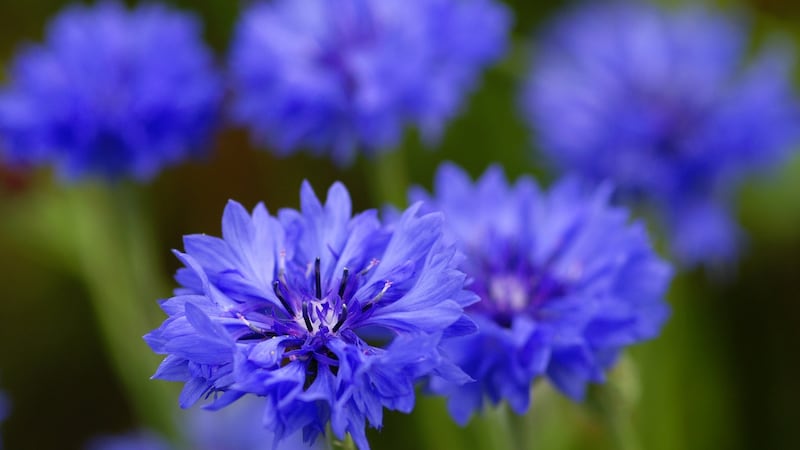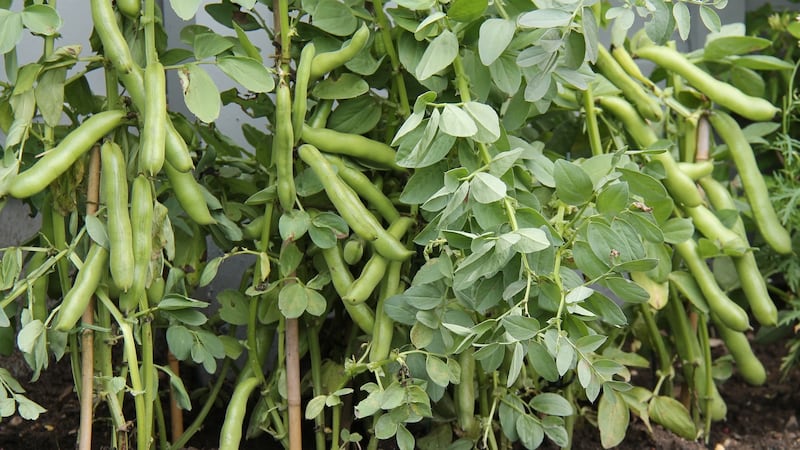1. Tackle early tomatoes
Did you know that tomatoes are also known as ‘pommes d’amour’ or ‘apples of love’? Late February is a great time to sow seed of these heat-loving tender annuals for planting out into the glasshouse, polytunnel or a sunny, frost-free porch in late spring/early summer.
For best results, use an electric propagator set to an optimum temperature of 21°-23°, but if that’s not an option, then a bright, warm windowsill will do the trick. Use a good-quality seed compost, clean pots and sow very sparingly, resisting the urge to sow gazillions of seed (there’s nothing sadder than the sight of a potful of unwanted tomato seedlings). Bear in mind that your baby tomato plants will need high natural light levels and protection from cold draughts and chilly nights over the coming months to stop them becoming leggy or suffering a sudden check to their growth. But don’t mollycoddle them too much by placing them in a very warm room as this will only encourage the production of soft, weak growth.
Recommended online seed suppliers include Cork-based organic seed producer brownenvelopeseeds.com; Sligo-based greenvegetableseeds.com; Dublin-based mrmiddleton.com; Galway-based seedaholic.com; UK-based kingsseeds.com and all good Irish garden centres. Recommended varieties include Sungold, Maskotka, Stupice, Costoluto Fiorentino and Santonio.
2. Pot-on perennials
As long as the ground isn’t frozen or waterlogged, late February is an excellent time to lift, divide and then either replant or pot-on established clumps of many different kinds of perennials as well as to plant new purchases. When lifting, dividing and replanting established plants like this, always make sure to check for any invasive perennial weeds such as creeping buttercup, scotch, bindweed and ground elder whose root systems might be concealed within the clumps. Use a garden knife or a hand-weeding tool to carefully remove these weeds to prevent them from recolonising freshly cleared ground.
3. Sow leeks
If you have a glasshouse, polytunnel or sunny porch, then it’s well worth sowing leeks under cover and in gentle heat (14°) this month for pricking out and then transplanting outdoors in late spring as young transplants. Recommended varieties to grow from seed at this time of year include Zermatt; Porbella; and Hannibal. See above for recommended online seed suppliers.
4. Get to grips with dahlia tubers
Exuberantly beautiful, entirely edible, impressively long-flowering and available in a glorious range of colours and heights, dahlias are one of the brightest and most beautiful stars of the summer and early autumn garden. Now is an excellent time to order their tubers (the plants' plump, fleshy root systems) while stock of hard-to-get/fashionable varieties is still available. Recommended online suppliers include Dublin-based mrmiddleton.com, all good Irish garden centres, and UK-based Peter Nyssen (peternyssen.com) which has cleverly overcome the problems of post-Brexit delivery to the European Union by shipping from its Dutch depot.
Late February/March is the perfect time to pot the tubers on (use a good-quality multipurpose compost and make sure to label each pot) before placing them in a bright, frost-free place to bring the plants into early growth (early growth means early flowers). They can then be planted out in your garden/allotment or into pots outdoors in late May. Alternatively, store your dahlia tubers in a cool, dark, well-ventilated, frost-free place until it’s time to plant them out directly into their final growing positions in the garden (late April/early May). These tubers will be slower into flower than their potted-on equivalents but it’s less labour-intensive.

5. Sow easy-to-grow hardy annuals
Many kinds of easy-to-grow hardy-flowering annuals can be raised from seed sown at this time of year (under cover and with gentle heat) for pricking out into trays/modules. They can then be transplanted out into your garden or allotment in late spring where they will give months of colour and scent as well as food for visiting pollinating insects. Examples include sweet pea (Lathyrus), Ammi, Calendula, larkspur (Consolida), Orlaya, Cerinthe, cornflowers (Centaurea) and snapdragons (Antirrhinum), all of which also make excellent cut flowers. Recommended seed stockists include all good Irish garden centres plus specialist online seed suppliers such as seedaholic.com and b-and-t-world-seeds.com.
6. Prune winter-flowering shrubs
Once they've finished flowering, it's time to prune back many different kinds of winter-flowering shrubs including winter honeysuckle (Lonicera sp), Viburnum x bodnantense and V farreri and winter jasmine. Many late summer-flowering shrubs can also be pruned this month, including the butterfly bush Buddleja davidii, perovskia, romneya, potentilla, fuchsia and caryopteris, all of which flower on new growth. February is also the time to hard-prune certain types of the ornamental climbing plant known as clematis including varieties of C viticella, Clematis texensis, some late, large-flowered kinds (eg C Jackmanii, Comtesse de Bouchaud and Perle d'Azur), and herbaceous species of clematis such as C recta, C integrifolia and C heracleifolia. For detailed instructions on pruning clematis, see rhs.org.uk. Always wear gardening gloves to protect your hands when pruning and use a clean, sharp secateurs or loppers before finishing off with well-rotted organic mulch around the base of the plant, making sure to keep it from directly touching any stems as this could cause later problems with disease.
7. Indulge indoor plants
This is a great time of year to give any indoor plants some TLC by gently removing/cutting away any dead foliage or faded flowers and then using a damp, clean cloth to wipe down dusty leaves. If you notice obvious signs of insect pest infestation, use a homemade spray made with a drop of washing-up liquid, a teaspoon of vegetable oil and four fluid ounces of warm water. If that doesn’t work, gently spot-treat using a cotton bud dipped in surgical spirit. Spring is also the best time to pot-on or repot any houseplants that have outgrown their containers or are badly in need of fresh, nutritious compost, something that ideally should be done every two years to ensure healthy, vigorous growth.
8. Order early for summer lillies
Wondering about ways to make summer arrive just that little bit earlier this year? Then a potful of your very own homegrown lilies is just the thing. Order the large, fleshy bulbs this month (you’ll need roughly three to five bulbs for a 30cm diameter container).Then pot them on (use a deep container and a soil-based John Innes compost, mix in a sprinkle of granular fertiliser, plant them pointy-end up and leave 5cm between each bulb) before placing the container in a cool, bright but frost-free spot.
Initially, water only if the compost feels dry to the touch as lily bulbs are prone to rotting when left sitting in cold, wet compost. But once you see obvious signs of growth (green tips pushing through the surface), gradually increase the amount of watering so that it's slightly moist but never sodden. To really speed the process up and force the bulbs into very early flower, you can move the pots into a warm, bright room once the first new, green shoots appear above the surface. Lily bulbs are available to order from all good garden centres including Kildare-based johnstowngardencentre.ie.
9. High-speed compost
Sick of struggling to make the perfect crumbly, sweet-smelling garden compost? Solve the problem with a modern, insulated composting bin such as the award-winning Hotbin. It makes the process a whole lot easier by dramatically speeding it up and allowing you to successfully compost all sorts of previously uncompostable food waste including meat and fish (both the 100L Hotbin Mini,€198.50, and the 200L Hotbin, €271, are available to order from quickcrop.ie).

10. Broad beans for green-fingered kids
Looking for some green-fingered ideas for your children to enjoy? Growing broad beans from seed is something that even very young children will find easy and fun. Each seed is Jack-in-the Beanstalk large and easy to handle while they can be either sown directly into the ground at this time of year, as long as the soil isn’t sodden or frozen, or – my preference – sown into individual small pots under cover for hardening off and then planting out in March (broad bean plants are surprisingly hardy). Varieties suitable for sowing at this time of year include Gardener’s Choice, Bunyard’s and Witkeim. Broad beans like a fertile, free-draining but moisture-retentive position and an open spot.











